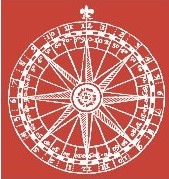Bestiality and Gluttony in Theory and Practice in the Comedies of Giovan Battista Della Porta
Giovan Battista Della Porta (1535–1615), Neapolitan nobleman, scholar/scientist, and writer famed for books on natural magic and physiognomy, expressed quite explicit views on bestiality—that is, on human beings having sex with animals. Della Porta…
Listed in Article | publication by group Iter Community
Version 1.0 - published on 18 Oct 2025
Licensed under Creative Commons BY-NC 4.0
Description
Giovan Battista Della Porta (1535–1615), Neapolitan nobleman, scholar/scientist, and writer famed for books on natural magic and physiognomy, expressed quite explicit views on bestiality—that is, on human beings having sex with animals. Della Porta populated his plays with characters who allude to their desire both to have sex with animals and to assume animal shapes in order to satisfy their yearnings; the gulone (the glutton), an archetypal character that was a cultural relic from Roman comedy, is a case in point. According to Della Porta, eating habits are indicative of other habits that can be expressed in a person’s physical appearance; his fascination with monstrous bodies and their concomitant bizarre sexual desires betrays a tendency to understand human beings as akin to animals, and indicates the porosity, as he saw it, of boundaries between these two worlds. Le noble napolitain Giovan Battista Della Porta (1535–1615), chercheur, scientifique et écrivain, connu pour ses ouvrages sur la magie naturelle et la physiognomonie, s’est exprimé de façon explicite au sujet de la bestialité, c’est-à-dire au sujet d’humains ayant des rapports sexuels avec des animaux. Les pièces de théâtre de Della Porta sont habitées par de nombreux personnages qui font allusion à la fois à leur désir d’avoir des contacts sexuels avec des animaux, et de prendre une forme animale pour assouvir ces désirs. Le gulone (le glouton) en est un cas, tout en étant un personnage archétypal issu de la comédie romaine. D’après Della Porta, le comportement à table pouvait indiquer la présence d’autres habitudes, parfois visibles dans l’aspect physique d’une personne. Sa fascination pour les corps monstrueux et leurs désirs sexuels étranges trahit sa tendance à considérer les humains comme apparentés aux animaux, et met en lumière la perméabilité telle qu’il la concevait de la limite entre ces deux règnes.
Cite this work
Researchers should cite this work as follows:
Tags
Notes
Original publication: Kodera, Sergius. "Bestiality and Gluttony in Theory and Practice in the Comedies of Giovan Battista Della Porta." Renaissance and Reformation 38 (4): 2016. 89-120. DOI: 10.33137/rr.v38i4.26375. This material has been re-published in an unmodified form on the Canadian HSS Commons with the permission of Iter Canada / Renaissance and Reformation. Copyright © the author(s). Their work is distributed by Renaissance and Reformation under a Creative Commons Attribution-NonCommercial 4.0 International License. For details, see https://creativecommons.org/licenses/.
Publication preview
Iter Community
This publication belongs to the Iter Community group.
When watching a publication, you will be notified when a new version is released.
